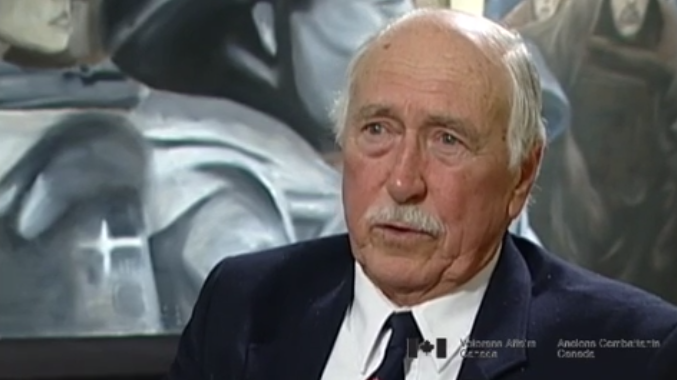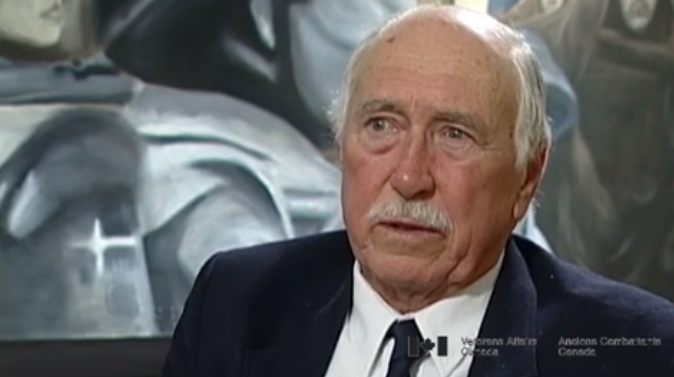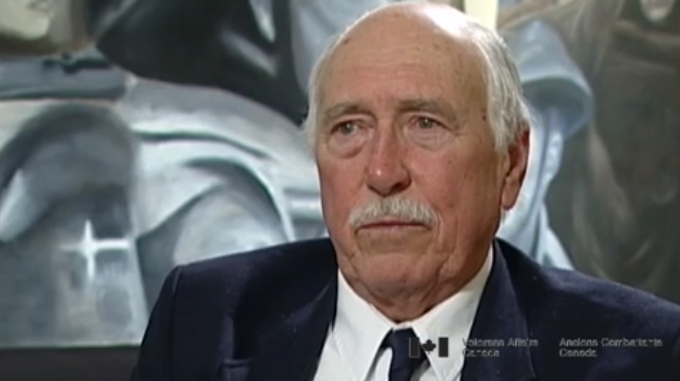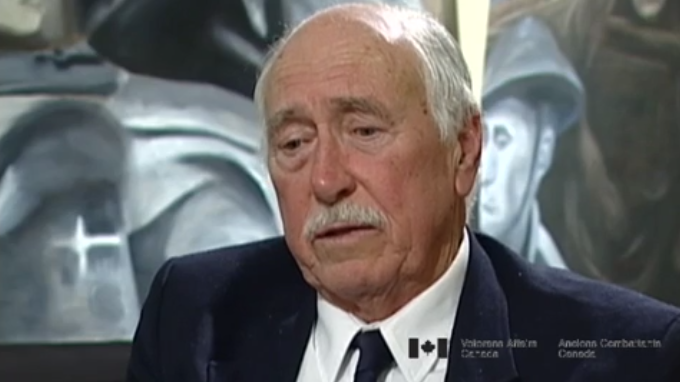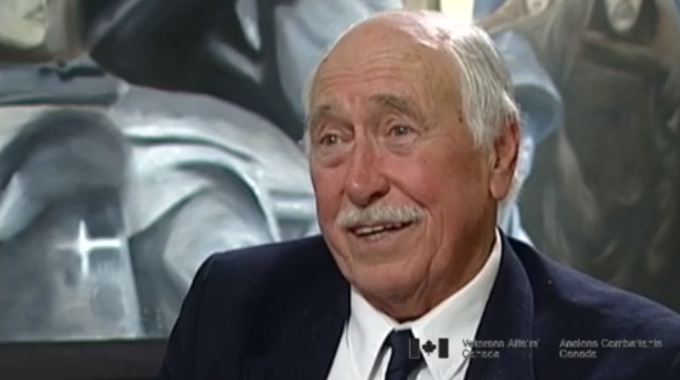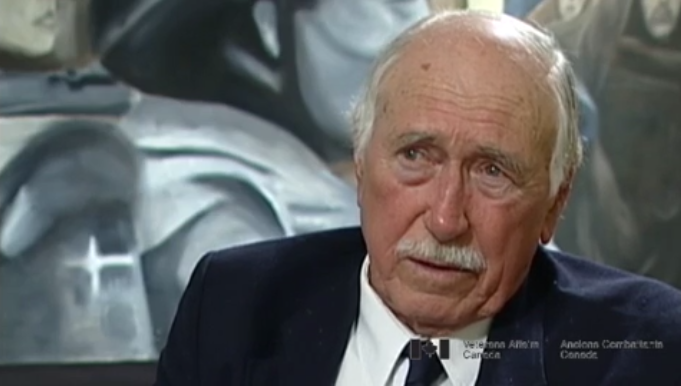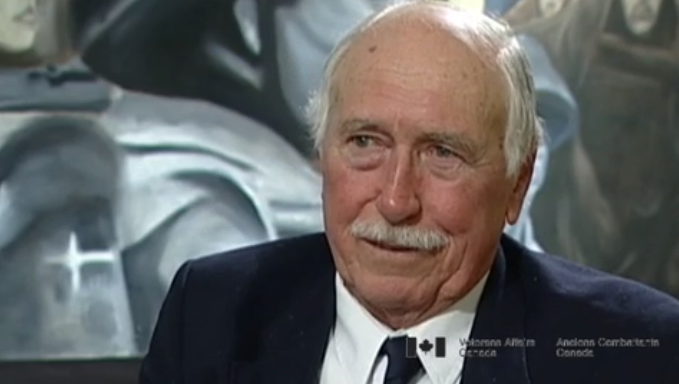If you want to talk air planes, there's, the, there was a, there
was a difference between the Lanc and the Halifax. Halifax was
the old workhorse and the, and the turrets were different. They
were electrically operated and on the Lancaster they were
hydraulic. So, but the Halifax never gets the credit that it
should've got, it's just, it's sad because a lot of people, you
know, were killed in the old Halifax, too, but they did a lot of
bombings. They did far more than Lancaster, but yet the
Lancaster gets the... It's the same way with the old Hurricane
fighter. That was a backbone, they shot down more air planes
than the Spitfire did. And where are they? They're history, but
the Spitfire seems to be always the one, the Lanc's always the
one that's out there. That's rather disappointing because I flew
them both. I flew both the Halifax and the Lancasters. So I know
that, you know, there is a difference, but...
Interviewer: Can you tell me more about the
differences between them, or...?
Well, the, the old Halifax, they had four guns in the mid-upper
territory, like, and it was, the turret wasn't as high as it was
on the Lancaster. But it, it worked, with just like a joy-stick.
And the firing button was right in the thing. In the top of the
handle, the... but it was working so your guns would go up and
down, so you... and, of course, they had fire interrupters so
that you wouldn't shoot the tail off, because, ( inaudible) but
anyway, that, that's the way, you know, it would interrupt the
fire if you were going by the tail. But you know, it was, it was
good actually. I enjoyed the, really, this. In the Lancaster,
they had pistol grips like on a, on a bicycle and the triggers
were in a, like a trigger as you would see in a gun, on a rifle.
But they, they were the same, except that the bubble on the
mid-upper turret on that was, was bigger, and you asked me a
question about which one I liked the best... there's a question.
Actually, the one on the Lancaster was better to see out of,
especially the mid-upper. And, and actually it was the best
riding one because you're just about in the middle of the air
plane, you know, it didn't matter whether you, when you were
going into a corkscrew, because you fall down two or three
hundred feet and then roll over at the bottom back up the other
side. It's that first throw-over that you... and the tail turret
there, you'd just go up to the, you know, if you weren't
strapped in you'd be up in, at the top of the turret. It just
throws you right up. But the mid-upper, it was pretty well, just
follow it down and back up again, but, you know? But the thing
about mid-upper turret, you go 360 degrees, you go this way or
that way, go where you like. And you could put it to the front,
you know, and look ahead for a change instead of looking behind
you all the time. See where you'd been. So that was one of the
advantages, and you could look over the side, down, or anything
with it. It was good. But the Lancaster only had two in the
mid-upper, two guns in the mid-upper. But that, that was the
best, actually, the most scenic place to sit, I'd say, if you're
going to sit somewheres, you might as well sit and enjoy it. If
it was a nice night, starry night it and that, it was beautiful
sitting up there. And mid-upper, was it, you could turn around
and you could see the engines. And if you were lucky, if you'd
look ahead, there was an astrodome there where they, where they
took the section shots at the stars and stuff for navigation.
And once in a while you'd see the wireless operator come up and
look, stick up his head into the astrodome so he could go... a
little wave, but, no... But it was, it was, I don't know...
Flying is, to me, is even another world.



